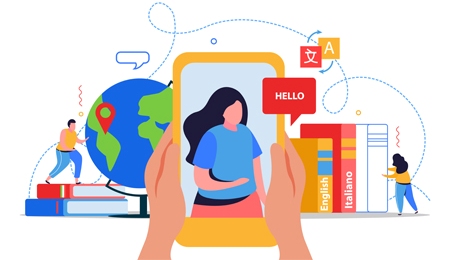Have you recently used machine translation? Modern neural translation software is obviously excellent in terms of speed and quality.
The interaction between people, technology, and the dissemination of information was irreversibly altered by the advent of the printing press in the 15th century. A few centuries later, computers began to make language translation easier, which sped up the development of machine translation software. Today, in a more international society, you can see how far translation software has come.
Facilitating online participation will have a significant impact on the future of the translation sector, which is an essential component of the international business world. The demand for translators is at an all-time high due to the industry’s rapid growth, the expansion of online communication, and the requirement for real-time translations.
A crucial component of international communication, translation services continue to improve on a yearly basis.
It is safe to conclude that the need for translation services has increased in line with the growth of commercial networks and operations. Translation services are becoming essential for multinational corporations due to the requirement for clear communication with teams and clients across national and linguistic boundaries.
Parallel to this, businesses now have a quick and affordable substitute for traditional translation services because to the speedy development of machine translation technology. How does computer translation compare to human translation, though?
How does machine translation work?
Even while machine translation has been a part of technology since the 1950s, it has recently advanced at a dizzying rate. There are various machine translation methods, but neural machine translation is the most sophisticated and is giving the greatest results.
Neural machine translation uses machine learning techniques based on artificial neural networks inspired by central nervous systems made up of innumerable, interconnected tiny units to train software to translate. The machine then processes and analyzes enormous amounts of already-existing data to identify patterns and structures in addition to translations.
The advancement of neural machine translation is very astounding, especially given how recent it is. Despite being in its infancy, machine translation technology is developing quite quickly. Additionally, many are choosing to employ machine translation and then alter the sentences it generates, which is already disrupting the translation industry as we now know it.
When should you use translation software?
Machine translation has advantages in terms of cost and speed because it is frequently quick and cheap. Despite the fact that machine translation is revolutionizing the translation market, human translators will not be rendered obsolete any time soon.
Our Recommendation For The Most User-Friendly Text Translation API Available Is: Text Translation and Language Detector API
With this API you will be able to detect any language from a text and dynamically translate it.

What this API receives and what your API provides (input/output)?
Simply paste the text you want to translate or use to determine the language. Either the revised text or the language translation will be sent to you.
What are the most common uses cases of this API?
For businesses or consumers that deal with international traffic, this API is appropriate. It’ll allow your business to reach more audiences and eventually grow, making it global.


